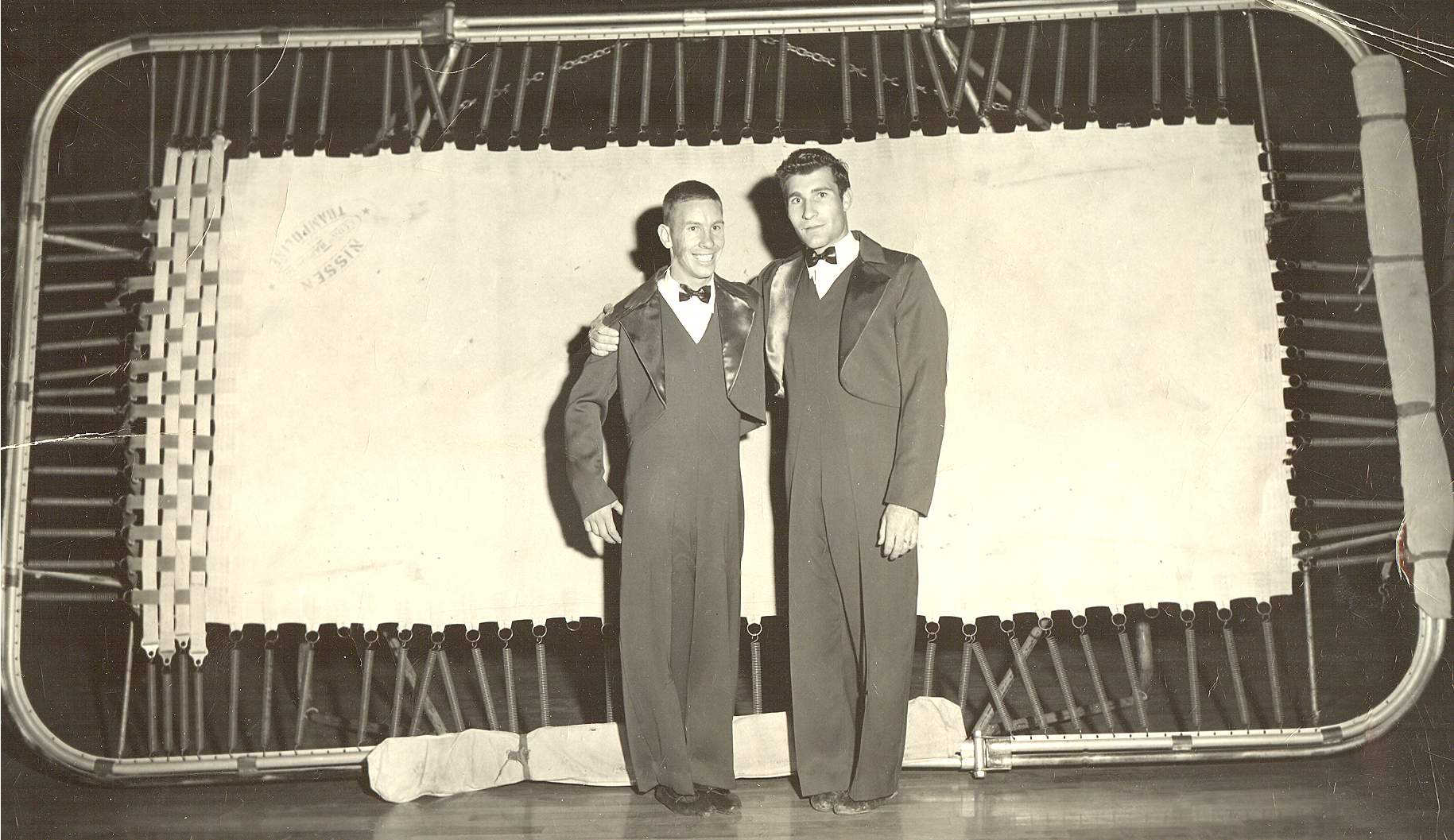

Furniture
Who Invented The Incandescent Lamp
Modified: January 9, 2024
Discover the fascinating history of the incandescent lamp, from its invention to its impact on modern lighting technology. Learn about the innovative minds behind this revolutionary furniture.
(Many of the links in this article redirect to a specific reviewed product. Your purchase of these products through affiliate links helps to generate commission for Storables.com, at no extra cost. Learn more)
Introduction
The invention of the incandescent lamp revolutionized the way we illuminate our homes and workplaces. Before the days of electric lighting, people relied on candles, gas lamps, and oil lamps to light up their surroundings. However, these forms of lighting were often inefficient, produced dim illumination, and posed a significant fire risk.
With the advent of the incandescent lamp, a new era of safe and efficient lighting dawned. This groundbreaking invention has had a profound impact on our daily lives, transforming the way we work, study, and enjoy our leisure time. In this article, we will dive into the fascinating history of the incandescent lamp, from its early attempts at electric lighting to its inventor and the subsequent legal battles that ensued.
So, let’s embark on a journey through time to discover the origins of the incandescent lamp and how it has shaped the world of lighting as we know it today.
Key Takeaways:
- The invention of the incandescent lamp by Thomas Edison revolutionized lighting, extending productivity and leisure time, and transforming the aesthetics of living and working spaces.
- Despite being surpassed by more energy-efficient alternatives, the incandescent lamp’s impact on society and the evolution of lighting technology is undeniable, leaving an indelible mark on the world.
Read more: Who Invented The Incandescent Bulb
Early Attempts at Electric Lighting
The concept of electric lighting dates back to ancient times when civilizations used various methods to harness light. For example, the ancient Egyptians used lamps filled with oil or animal fat with a wick made of papyrus or flax. In the 18th century, scientists began experimenting with electricity and its potential for lighting.
One of the earliest pioneers in electric lighting was Sir Humphry Davy, a British chemist, who invented the electric arc lamp in 1802. This lamp consisted of two carbon rods that created a bright arc of light when electricity passed between them. While Davy’s invention was a significant milestone, it was not suitable for practical lighting purposes due to its high energy consumption and short lifespan.
In the early 19th century, more inventors sought to improve on Davy’s arc lamp design. William Staite, an English chemist, patented a high-pressure arc lamp in 1845, which produced a more stable and brighter light. However, these arc lamps still faced challenges such as high maintenance and the need for constant supervision.
Another notable figure in the early history of electric lighting was Warren de la Rue, an English astronomer and chemist, who invented the incandescent lamp in the 1820s. De la Rue’s lamp used a platinum wire filament enclosed in a vacuum tube, which glowed when an electric current passed through it. While this design showed promise, the high cost of platinum rendered it impractical for widespread use.
As the 19th century progressed, inventors around the world continued to experiment with different materials and designs in an effort to create a practical and reliable electric lamp. It was during this time that Thomas Edison would enter the scene and make significant advancements in electric lighting technology.
Thomas Edison and the Invention of the Incandescent Lamp
When discussing the invention of the incandescent lamp, it is impossible not to mention the name of Thomas Edison. Born in 1847, Edison was an American inventor, entrepreneur, and businessman known for his prolific contributions to various fields, including electric lighting.
In the late 1870s, Edison embarked on a quest to develop a practical and commercially viable incandescent lamp. He conducted extensive research and experimented with different materials for the lamp’s filament. After countless hours of testing, Edison found that a carbonized bamboo filament held great promise.
In 1879, after many iterations and improvements, Edison successfully demonstrated a functional, long-lasting incandescent lamp. His lamp used a carbonized cotton thread filament, which lasted a remarkable 13.5 hours. Although this may seem modest by today’s standards, it was a considerable achievement at the time.
Edison’s incandescent lamp was revolutionary for several reasons. It was not only more efficient and durable than previous electric lamps, but it also produced a brighter and more pleasing light. This new form of lighting quickly gained popularity, and Edison’s invention paved the way for the widespread adoption of electric lighting.
In addition to developing the incandescent lamp itself, Edison also played a crucial role in creating the infrastructure necessary for its practical implementation. He established the Edison Electric Light Company in 1878, which later merged with other companies to form the General Electric Company, one of the world’s largest electric utility companies.
Edison’s incandescent lamp had a significant impact on society. It transformed the way we live and work, making it possible to extend our productivity and leisure time well into the evening. It illuminated streets, homes, and workplaces, providing a safer and more convenient alternative to traditional lighting methods.
Despite Edison’s success and his contributions to electric lighting, it is important to note that he did not single-handedly invent the incandescent lamp. Other inventors and researchers around the world were also working on similar technologies during that time. However, Edison’s design and commercialization efforts were crucial in bringing electric lighting to the masses.
The Carbon Filament and Improvements to the Design
The invention of the incandescent lamp by Thomas Edison marked a major breakthrough in the world of lighting. One of the key elements of Edison’s design was the use of a carbonized filament, which played a critical role in the lamp’s longevity and efficiency.
Edison initially experimented with various materials for the filament, including platinum, bamboo, and even hair. However, he eventually settled on a carbonized filament made from cotton thread. This carbon filament proved to be highly effective, offering a longer lifespan and better performance compared to his earlier attempts.
Carbon filaments were created by heating the material in the absence of oxygen, a process known as carbonization. This process made the filament more resistant to burning and breaking, allowing it to withstand the high temperatures necessary for incandescence.
Over time, Edison and his team made further improvements to the design and manufacturing process of the carbon filament. They discovered that treating the carbonized filament with various chemicals could enhance its performance. One such treatment involved the impregnation of the filament with cellulose, a natural polymer found in plant cell walls. This treatment improved the structural integrity of the filament, making it more durable and less prone to breakage.
Another crucial improvement came in the form of vacuum-sealed bulbs. In early designs, the incandescent lamp’s filament was exposed to air, leading to rapid oxidation and burnout. To address this issue, Edison and his team developed a vacuum-sealed bulb, which prevented oxygen from reaching the filament. This innovation extended the lifespan of the filament and significantly contributed to the commercial viability of the incandescent lamp.
The carbon filament, combined with the vacuum-sealed bulb, allowed Edison’s incandescent lamps to burn for longer periods of time. Early versions of the lamp lasted several hundred hours, but with ongoing advancements, the lifespan eventually reached thousands of hours. This durability made the incandescent lamp a practical choice for long-term lighting needs.
As the incandescent lamp gained popularity and widespread adoption, other inventors and researchers also contributed to the development of carbon filaments. Different methods were explored to improve the carbonization process and enhance the filament’s performance. This ongoing research led to the production of filaments with varying thicknesses and compositions, offering different levels of brightness and efficiency.
Despite later innovations in electric lighting, the carbon filament remained a prominent feature in incandescent lamps until the introduction of alternative technologies such as fluorescent and LED lighting. Nonetheless, the carbon filament era played a crucial role in establishing the foundations of modern lighting and set the stage for further innovations in the field.
Thomas Edison is often credited with inventing the incandescent lamp, but it was actually British scientist Sir Joseph Swan who developed a working prototype before Edison.
Legal Battles and Competitors
With the widespread adoption of the incandescent lamp, a fierce battle ensued among inventors and companies vying for a share of the lucrative lighting industry. Thomas Edison, having patented his design and established the Edison Electric Light Company, found himself at the center of many legal disputes and faced fierce competition from other inventors.
One of the most notable competitors was Nikola Tesla, an electrical engineer and inventor who worked for a time in Edison’s laboratory. Tesla had a different vision for electric lighting and advocated for alternating current (AC) power distribution, arguing that it was more efficient and practical than Edison’s direct current (DC) system.
Tesla and Edison became embroiled in what is now known as the “War of Currents.” Edison, known for his business acumen, launched a smear campaign against Tesla and the AC system, even going so far as to publicly electrocute dogs and other animals to demonstrate the supposed dangers of AC power.
Despite Edison’s efforts, Tesla’s AC system gained traction and ultimately emerged as the dominant method of power distribution. This shift in favor of AC power had significant implications for the lighting industry, as it allowed for more efficient transmission of electricity and facilitated the widespread adoption of incandescent lamps.
In addition to Tesla, there were other inventors and companies who sought to challenge Edison’s dominance in the lighting industry. Competitors such as the Brush Electric Company, the Westinghouse Electric Corporation, and the General Electric Company (formed through a merger of several companies, including Edison’s) emerged, each with their own designs and innovations.
Legal battles over patent infringement and licensing agreements became commonplace. Edison defended his patents vigorously and often sued his competitors to protect his inventions. These legal disputes, while contentious, spurred further innovation and advancement in electric lighting technology.
Despite the fierce competition and legal challenges, Edison’s incandescent lamp remained the industry standard for many years, largely due to his systematic approach to the manufacturing and distribution of lighting equipment. His vision and entrepreneurial spirit propelled the incandescent lamp into homes and businesses around the world.
However, as time went on, new lighting technologies, such as fluorescent lamps and later, light-emitting diodes (LEDs), emerged as more energy-efficient alternatives to the incandescent lamp. This shift in consumer preference, coupled with the phase-out of incandescent lamps in favor of more environmentally friendly options, led to a decline in their production and use.
Nevertheless, the legal battles and intense competition during the early days of electric lighting laid the foundation for the modern lighting industry. It fostered innovation, spurred technological advancements, and shaped the way we illuminate our surroundings to this day.
Read more: Who Invented The Electric Lamp
Legacy and Impact of the Incandescent Lamp
The incandescent lamp, invented by Thomas Edison, left an indelible mark on the world of lighting and had a profound impact on society. Its legacy can be seen in various aspects, ranging from the technological advancements it inspired to the way it transformed the daily lives of people around the globe.
One of the key impacts of the incandescent lamp was its role in extending productivity and leisure time. Before electric lighting, people’s activities were limited by the availability of natural light. The incandescent lamp allowed work, study, and entertainment to continue well into the evening hours, enhancing productivity and enabling greater flexibility in daily routines.
Moreover, the incandescent lamp provided a safer and more convenient lighting option for homes, workplaces, and public spaces. Unlike candles, gas lamps, and oil lamps, incandescent lamps did not produce open flames or emit noxious fumes. This made them significantly safer and eliminated the risk of accidental fires.
Additionally, the incandescent lamp revolutionized the aesthetics of lighting. Its warm, glowing light created a welcoming and cozy atmosphere in homes and public spaces alike. The ability to easily adjust lighting levels by simply flipping a switch offered unprecedented control over the ambience of a room, enhancing comfort and convenience.
From a technological standpoint, the development of the incandescent lamp marked a significant milestone in electric lighting. Edison’s patented design and his efforts to establish a viable commercial infrastructure allowed for the mass production and distribution of incandescent lamps.
The carbon filament, used in the incandescent lamp, set the stage for further advancements in lighting technology. It served as a foundation for the development of more efficient and longer-lasting filaments, which paved the way for the fluorescent lamps and light-emitting diodes (LEDs) that we use today.
Although incandescent lamps have become less common due to the advent of more energy-efficient lighting options, their impact on society remains undeniable. They played a crucial role in shaping the way we live, work, and interact with our surroundings.
Furthermore, the incandescent lamp served as a catalyst for progress in the lighting industry. It sparked intense competition, legal battles, and a drive for innovation among inventors and companies, resulting in rapid advancements in lighting technology.
Ultimately, the incandescent lamp is a testament to human ingenuity and the power of invention. Its enduring legacy can be seen in the evolution of lighting technology and the profound impact it has had on our daily lives.
While energy-efficient alternatives have gained prominence, the incandescent lamp will always be remembered as the brilliant invention that illuminated the path to a brighter and more illuminated world.
Conclusion
The invention of the incandescent lamp by Thomas Edison marked a turning point in the history of lighting. Edison’s relentless pursuit of a practical and commercially viable solution revolutionized the way we illuminate our world.
From the early attempts at electric lighting to the perfected design of the incandescent lamp with its carbon filament and vacuum-sealed bulb, Edison’s innovation set the stage for the widespread adoption of electric lighting. The incandescent lamp extended productivity and leisure time, provided safer and more convenient lighting options, and transformed the aesthetics of our living and working spaces.
The legacy of the incandescent lamp goes beyond the technological advancements it inspired. It sparked intense competition and legal battles, leading to further innovations in lighting technology and establishing the foundations of the modern lighting industry.
While the incandescent lamp has been surpassed by more energy-efficient alternatives such as fluorescent lamps and LEDs, its impact on society is undeniably significant. It opened up new possibilities, improving the quality of life for millions around the world.
The incandescent lamp will always hold a special place in the history of lighting, serving as a glowing reminder of human ingenuity and the power of invention. Its warm, inviting light brought comfort and convenience to our daily lives, and its enduring legacy can be seen in the evolution of lighting technology.
In conclusion, the incandescent lamp not only brightened our physical spaces but also illuminated the path to progress. It shaped the way we live, work, and interact with our surroundings, leaving an indelible mark on society. As we embrace new lighting technologies, let us remember and appreciate the brilliance of Edison’s invention and the impact it has had on our world.
Frequently Asked Questions about Who Invented The Incandescent Lamp
Was this page helpful?
At Storables.com, we guarantee accurate and reliable information. Our content, validated by Expert Board Contributors, is crafted following stringent Editorial Policies. We're committed to providing you with well-researched, expert-backed insights for all your informational needs.















0 thoughts on “Who Invented The Incandescent Lamp”